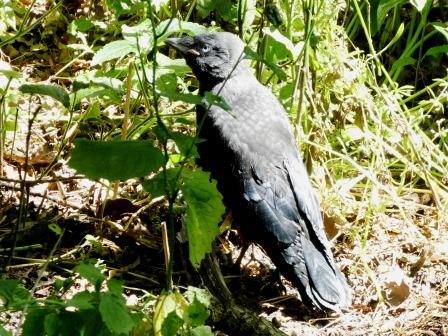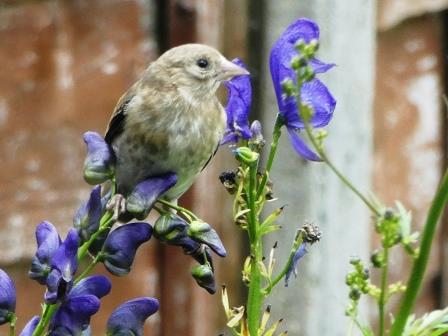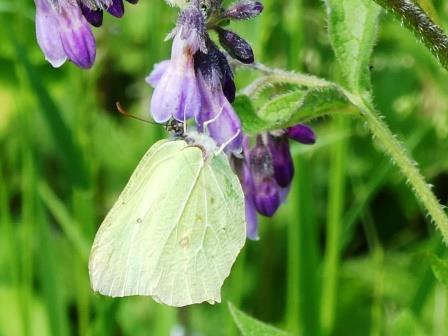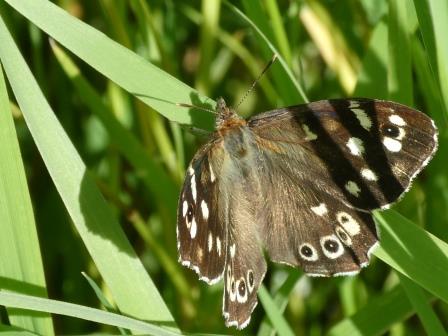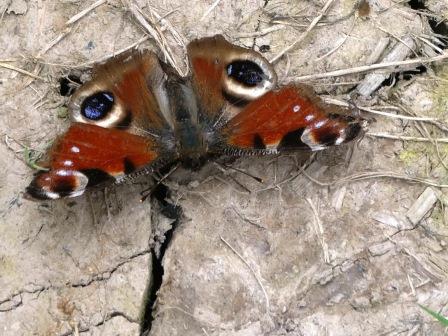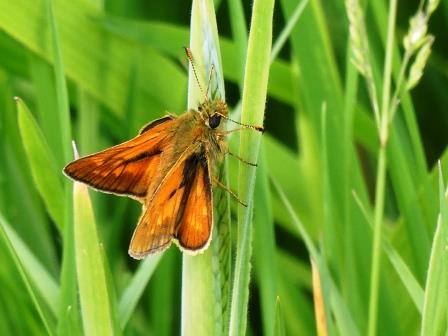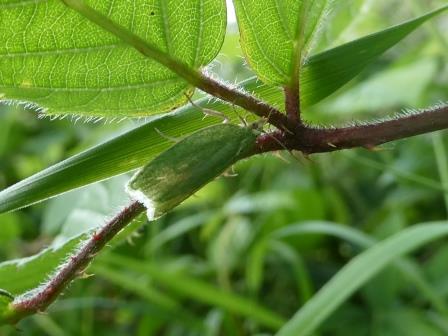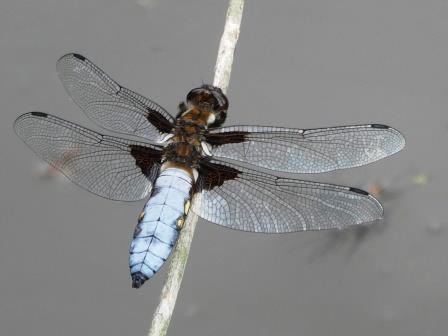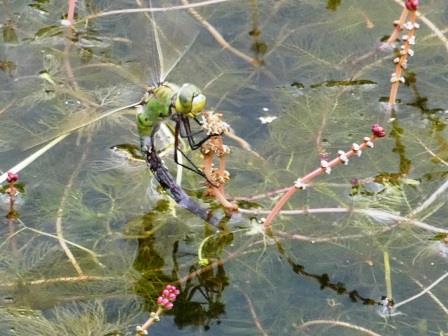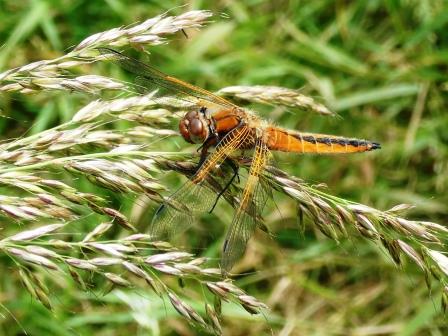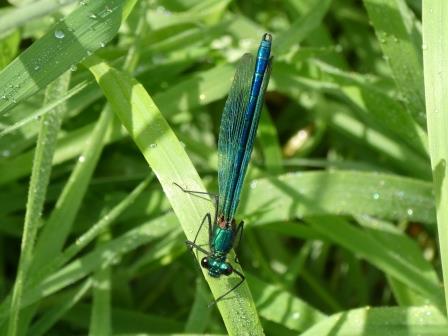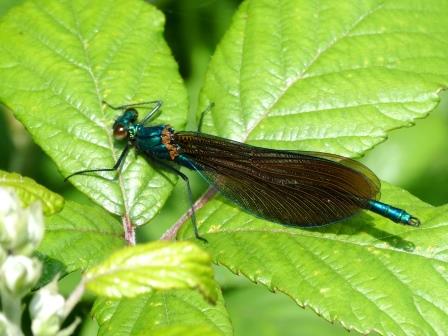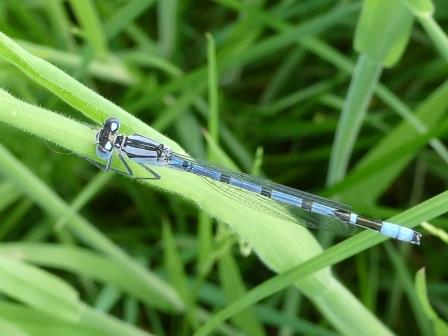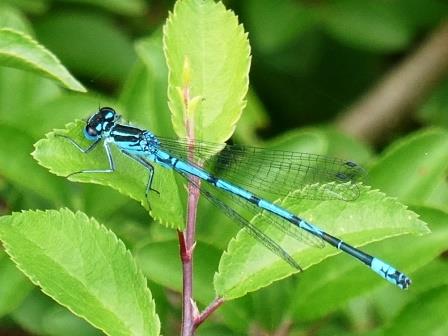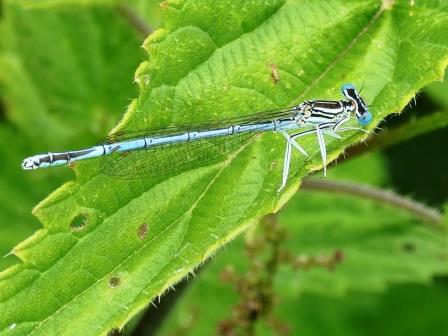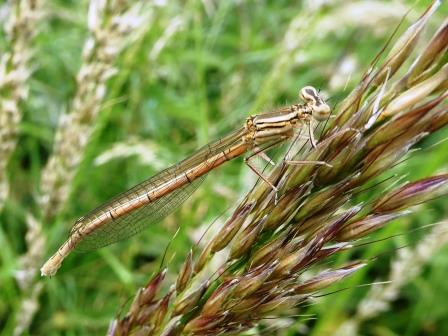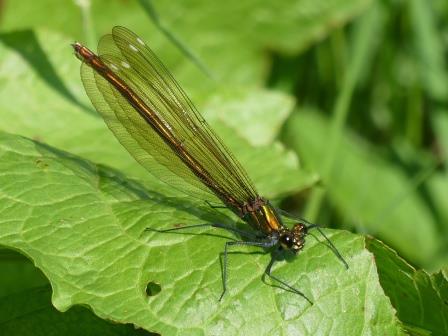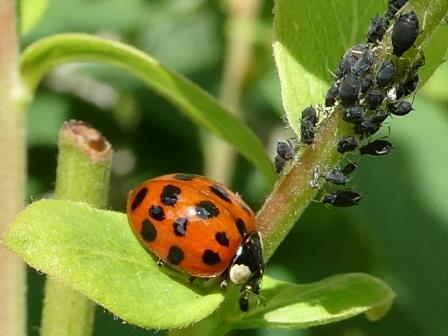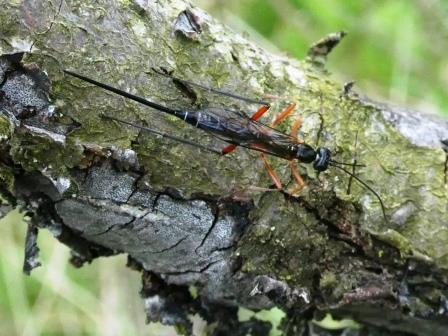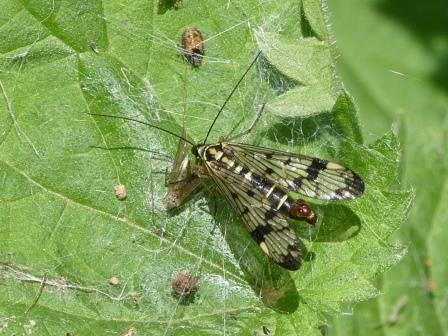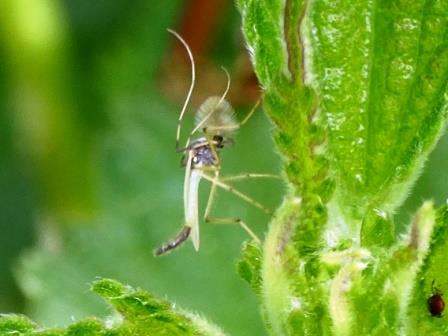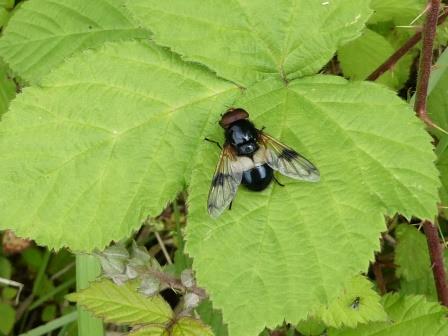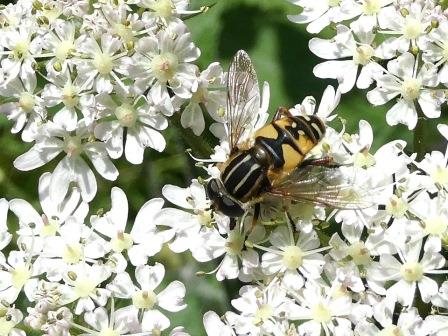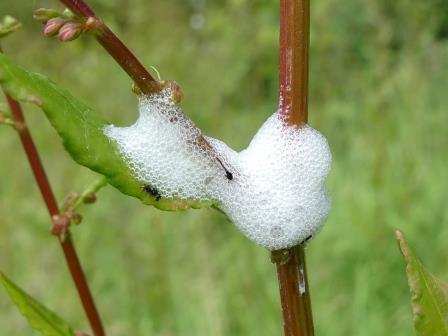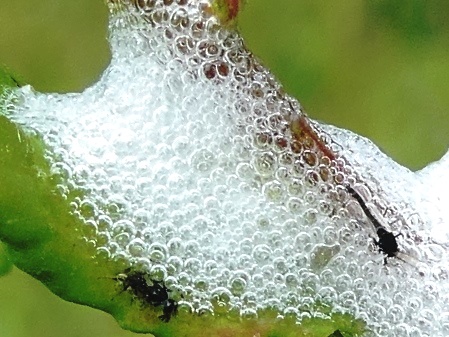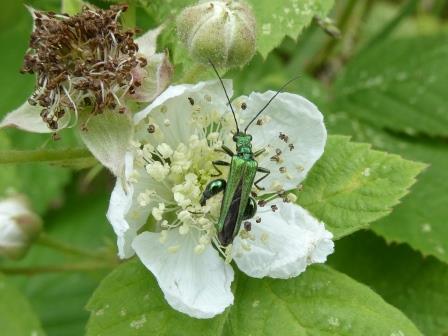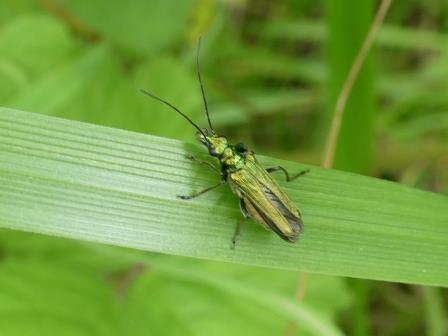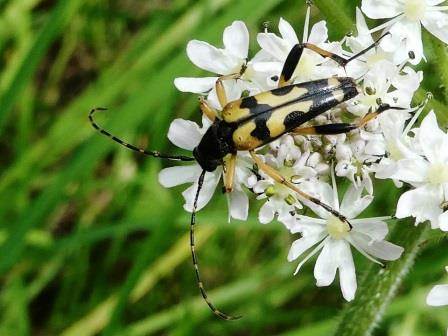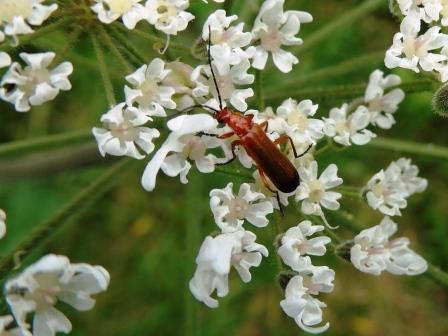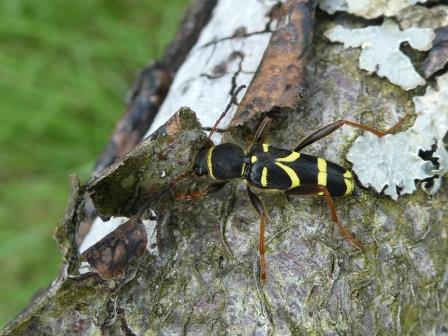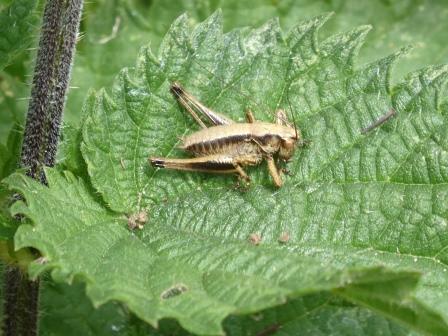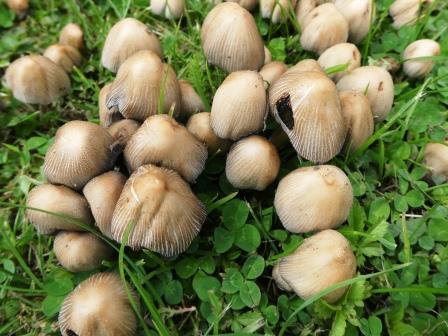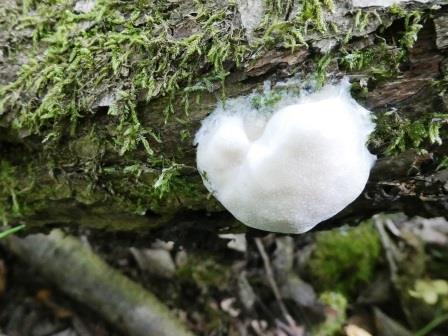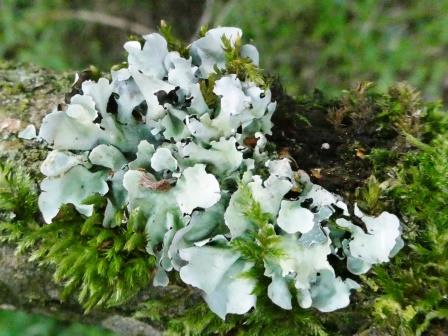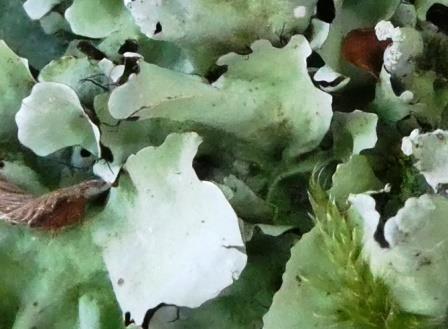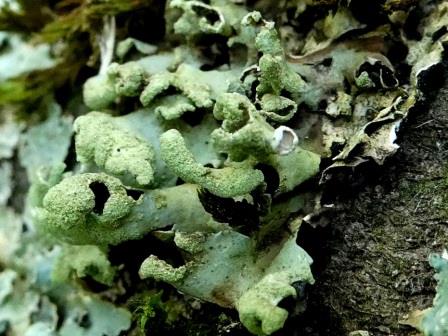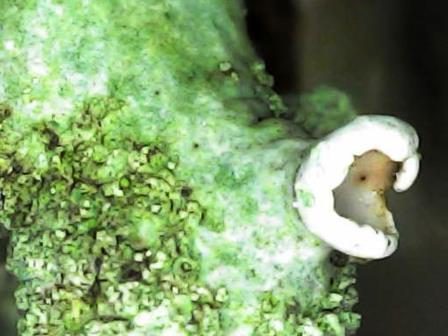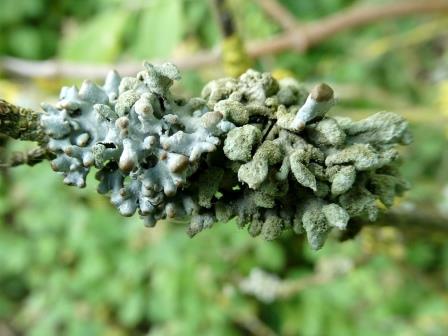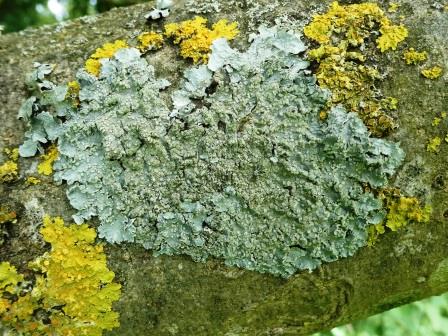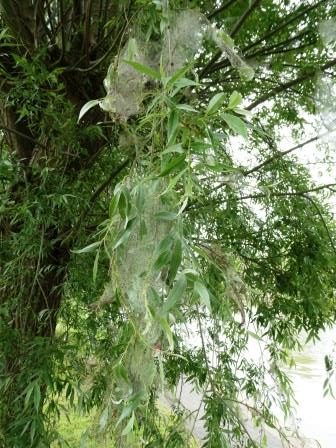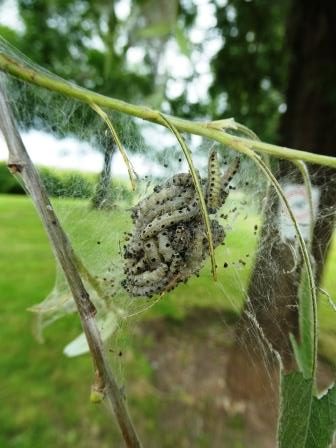Please refer to the Introduction Page to understand the context behind the monthly photographs.
Moths
The green oak moth is a distinctive green moth whose larvae feed on tree leaves, especially Oak. The head, forebody and front wings are green, the hind wings lightly greyish with the wingspan around 20mm. An infestation of the larvae can defoliate an oak tree. The adult female lays its eggs next to leaf buds, which the larvae consume when they emerge. As the larvae grow bigger they eat larger leaves, and then roll themselves up in a full-sized leaf to pupate. Larvae occur from April to June with the adults moths in June and July.
Insects - Wasps
Ichneumonids are wasps with a very narrow wasp waist between the middle and hind body parts. They have powerful chewing mandibles, two pairs of usually transparent membranous wings. All ichneumonids are parasitoids of other invertebrates – that is, their larvae infect and then kill a single host animal. This distinguishes them from parasites, which live off a host but don’t usually kill them, and predators, which attack and consume many individuals of the same or different species. In the UK we have approximately 2,500 species of ichneumonid. Making up almost 10% of all British insects.
Insects - Midge
Microtendipes pedellus is a non-biting midge in the subfamily Chironominae. A tiny striking species that has a dark brown thorax, and a pale green abdomen with the final three tergites brown. The legs are pale with dark tips and the wings have no pattern. Males have the two antennae with a mohawk edge.
Insects - Froghoppers
This strange bubbly froth is called frog spit. Nothing at all to do with a frog as the cluster of small transparent bubbles in a whitish foam is caused by an insect called a spittlebug or froghopper.
There is a small pale green to yellow insect inside.
The adult is a small hopping insect, often brown or beige. It is seldom seen, for not only does its color help conceal it, but it leaps to other plants when people approach. The adult spends its summer feeding on the sap of plants. At the end of the season, the female pierces holes in a stem and deposits its eggs. They hatch in the spring and, with the return of favorable temperatures, form a bubble home. The nymphs feed on the plant for several weeks, molt a few times, then emerge as adults. The foam is then washed from the plant by the next hard rain. There is only one generation a year. Given the pest’s life cycle, the appearance of frog spit is often considered a sign of the arrival of summer.
Lichen
Lichen are only recorded at each new OS Grid location (hover for Grid Ref). They are then entered on the British Lichen Society spreadsheet and submitted for their Warwickshire VC38 Lichen database and Lichen mapping.
VC33 - East Gloucestershire - Moths
Noticed this White Willow covered in many web like enclosures. On closer inspection the web structure were not by spiders but by caterpillars. Note the web enclosures take in the willow leaves which are being consumed by the hungry caterpillars. Further investigation reveals the caterpillars are those of the White Ermine Moth which favours Willow trees. A relatively local species, occurring sporadically in much of England, though with an eastern and coastal bias. The caterpillars feed gregariously on the leaves inside the silken web enclosures between May and July. The adult moths then fly in July and August. The Willow can then can restore its lost foliage.
Ones that escaped the camera lens this month
a) Red Kite.
b) Hare.
c) Muntjac deer fawn.
